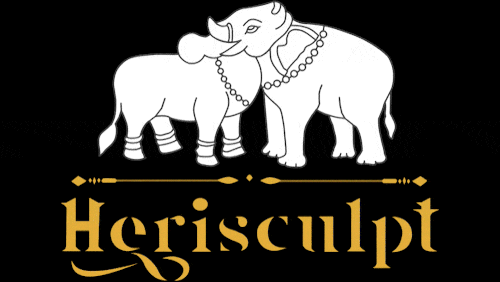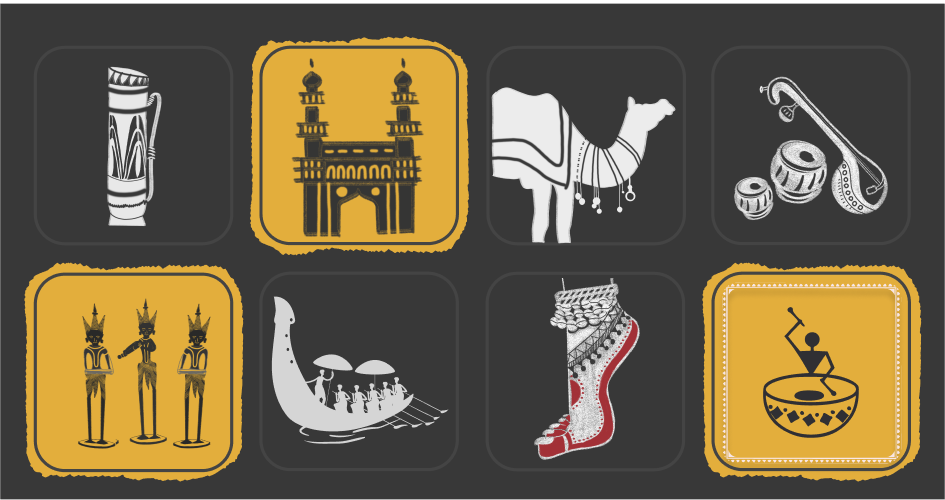Karikala Cholan: Visionary Behind the Kallanai Dam and the Kaveri's Greatness
Karikala Cholan, originally known as Aditya Karikalan and regularly known as Karikala the Great, was a prominent Tamil emperor of the Early Cholas who ruled historical Tamilakam (modern-day Southern India) from Uraiyur. He is renowned for building the flood banks of the river Kaveri and for his conquests in Tamilakam, Andhra, and Sri Lanka. Widely regarded as the greatest of the Early Cholas, Karikala is commemorated within the Thiruvalangadu plates of Rajendra Chola I, where the Medieval Tamil Cholas listed him as one of their esteemed ancestors.
Early Life of Karikala Chola
Karikala Chola, the illustrious emperor of the Early Cholas, became the son of Ilamcetcenni. Some students endorse an alternative meaning, deciphering "Kari" and "Kalan" as Tamil phrases for "slayer of elephants." The Poruṇarāṟṟuppaṭai presents a mythical account of this incident:
The king of Uraiyur (Tiruchirappalli), Ilamcetcenni, married a Velir princess from Azhundur, who gave beginning to Karikala. Ilamcetcenni died soon after Karikala's delivery. Due to his young age, Karikala’s declaration to the throne was omitted, mainly due to political turmoil within the US. Karikala was exiled in the course of this era of instability. When order was restored, Chola ministers sent a state elephant to find the prince. The elephant found Karikala hiding in Karuvur (modern-day Karur in Tamil Nadu). His political combatants captured and imprisoned him, putting the prison on the fireplace that night. Karikala escaped the fire and, with the help of his uncle Irum-pitar-thalaiyan, defeated his enemies. His leg became scorched inside the fire, leading to his name, Karikala.
Click Here to Buy this Karikala Cholan Statue
Ancient Sangam inscriptions and the sthala puranam of the ancient Saiva shrine at Parasalur, near Mayavaram, narrate that Karikala Valavan disguised himself as a Vedic and Agama Sastra lecturer to stay away from conspirators for eight years. The Paṭṭiṉappālai, written in reward of Karikala, also recounts this incident without citing the myth of his burnt limb:
"Like a tiger cub developing strong inside a cage, his electricity matured whilst in the bondage of his enemies. As an elephant pulls down the banks of a pit to enroll in its mate, so Karikala, after cautious consideration, drew his sword, overpowered his guards, and reclaimed his glorious history."
Karikala Chola's Military Exploits
The Battle of Venni
The Battle of Venni is an important event in Chola history. According to the Poruṇarāṟṟuppaṭai, Karikala Chola led his army to a big win against the Pandyan and Cheran king Uthiyan Cheralathan. Although there isn't much information about the battle, it was very significant. This victory was a key moment in Karikala’s rule, breaking the strong alliance against him and solidifying his power over some kings. Venni, now called Kovilvenni and located near Thanjavur, is remembered as the place where Karikala rose to power.
Further Conquests and the Conquest of Ceylon
After his victory at Venni, Karikala looked for more chances to win in battle. He defeated a group of nine small leaders in the fight at Vakaipparandalai, as noted by Paranar in the Agananuru. Stories also say that Karikala was one of the few Chola kings to conquer all of Ceylon (Lanka). His victories included the Sinhalese area, where he oversaw the building of the Grand Anicut, using Sinhalese prisoners to help move stones to the Kaveri River. The Pattinappalai shows the destruction caused by Karikala's armies, which had a lasting effect on the lands of his enemies.
Conquest of Thondai Nadu and Andhra from the Pallavas
Karikala's army did well in his fights against the Pallavas. Many village records and Telugu Chola writings in Andhra show his battles against Trilochana Pallava or Mukhanti Pallava, which led to the capture of Thondai Nadu. His victories forced the Pallava capital to move from Kanchi to Kalahasti. To show his power, Karikala told Trilochana Pallava to help build flood banks along the Kaveri River, which led to more fighting and the Chola taking control in the region. Under Karikala's rule, forests were cleared and villages were built, showing his focus on expanding land and improving farming.
Northern Expedition and Beyond
Having consolidated his rule inside the south, Karikala embarked on a northern excursion, leaving his mark inside the Himalayas along with his engraved tiger emblem. Tributes poured in from remote kingdoms, with the king of Vajra presenting a pearl cover, the king of Magadha providing an audience corridor, and the king of Avanti gifting an impressive arch. These conquests and diplomatic gestures underscored Karikala's stature as a powerful monarch, extending his influence far past the confines of Tamilakam.
Visit Us to Browse Our products
Grand Anicut:
Karikala Chola was a famous king known for his military victories and improvements in government. He had a big impact on ancient Tamilakam. One of his greatest achievements is the Grand Anicut, or Kallanai Dam, on the Kaveri River. The dam is about 5.4 meters high and 1,079 feet long, holding 15.4 million cubic meters of water, which is 15.4 billion liters. During his rule, Karikala led a military campaign to Sri Lanka and brought back 12,000 Sinhalese men to help build the dam. Although details about this event are not clear, later Chola kings credited Karikala with the construction of riverbanks along the Kaveri River.
Records from the 7th century CE, known as the Malepadu plates, show Karikala's importance. They link the Telugu Chola king Erigal-Mutturaju Punyakumara to Karikala and mention his key role in building the banks of the Kaveri, working with other local kings like Pallava Trilochana. The Grand Anicut is Karikala's biggest engineering success. Made of rough stone, it is 329 meters long and 20 meters wide, helping manage the Kaveri River's flow for irrigation and farming for many years. Later records confirm Karikala's important role in this great engineering work, showing how his leadership helped Tamilakam during a prosperous time.
Karikala's Devotion and Memorials
Perur Patteeswarar Temple
After his successful campaigns in the North, King Karikala Chola returned to Tamil land and honored Lord Shiva at the famous Perur Patteeswarar Temple, located by the Noyyal River in present-day Coimbatore. Known for his strong faith, Karikala performed a special ceremony at the temple using one hundred golden containers. The temple's history is important in the Perur Puranam, a well-known Tamil book written by Kachiyappa Munivar.
Karikala Cholan Manimandapam
In honor of the illustrious king credited with the construction of the Grand Anicut, the Karikala Cholan Mani mandapam, a memorial corridor, was erected. Designed inside the different Chola architectural fashion, the corridor functions as a mind-blowing bronze statue of King Karikala. Constructed at a price of ₹21 million, it stands as a fitting tribute to the monarch's enduring legacy.
The Enigma of Dating Karikala
Finding the exact time when Karikala Chola ruled is still a topic of discussion among historians. Nilakanta Sastri thinks his reign was around 190 CE, while V. R. Ramachandra Dikshitar believes that the name Karikala in different writings might refer to different kings. This confusion is made worse by differences in old copper plates and stone carvings from the 10th and 11th centuries, which mention several Karikalas but do not clearly state their ruling periods.
Legacy and Lineage
Karikala Chola's impact is still seen today, shown by mentions in old records and documents from later dynasties. The Malepadu plates from King Punyakumara of Renati Chola praise Karikala for managing the Kaveri river's floods. The Garavapadu document from King Ganapati-deva of Kakatiya links his family to Durjaya, a descendant of Karikala. These references show how important Karikala's rule was to the politics and culture of South India.
Karikala Chola is a famous figure in Tamil history, known for his military victories, engineering skills, and religious devotion. Even with some unclear details about his reign, his lasting influence can be seen in the impressive buildings he built, the temples he supported, and the mentions of his family in later dynasties. His work has greatly shaped the culture and politics of South India, marking him as one of the greatest kings of the Chola dynasty.


